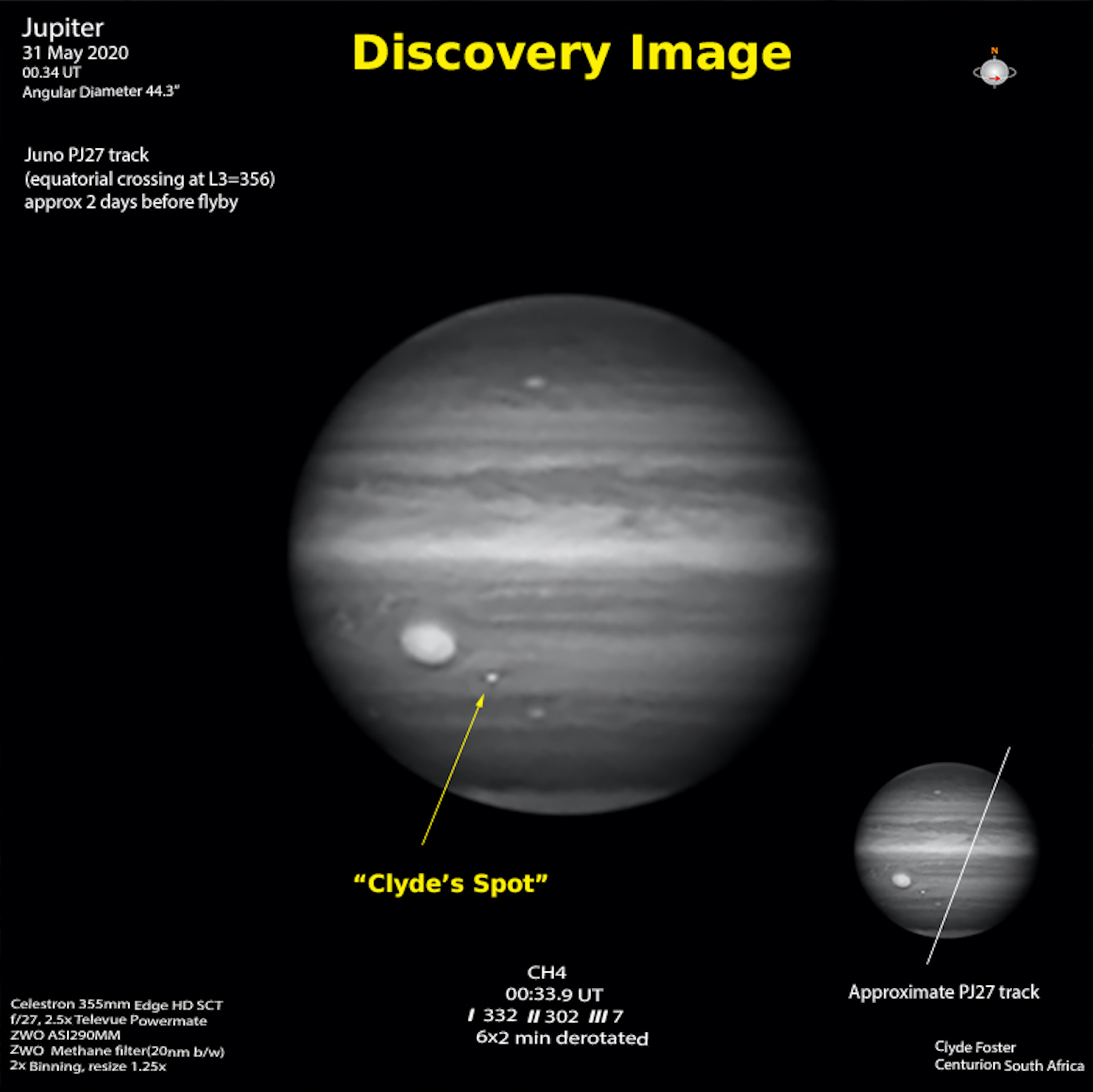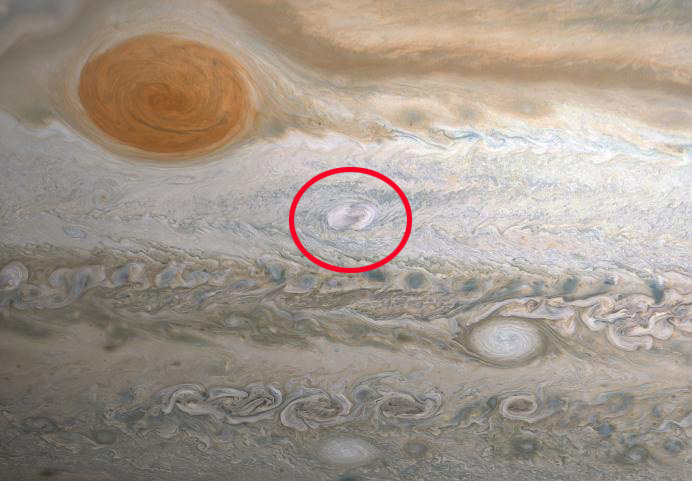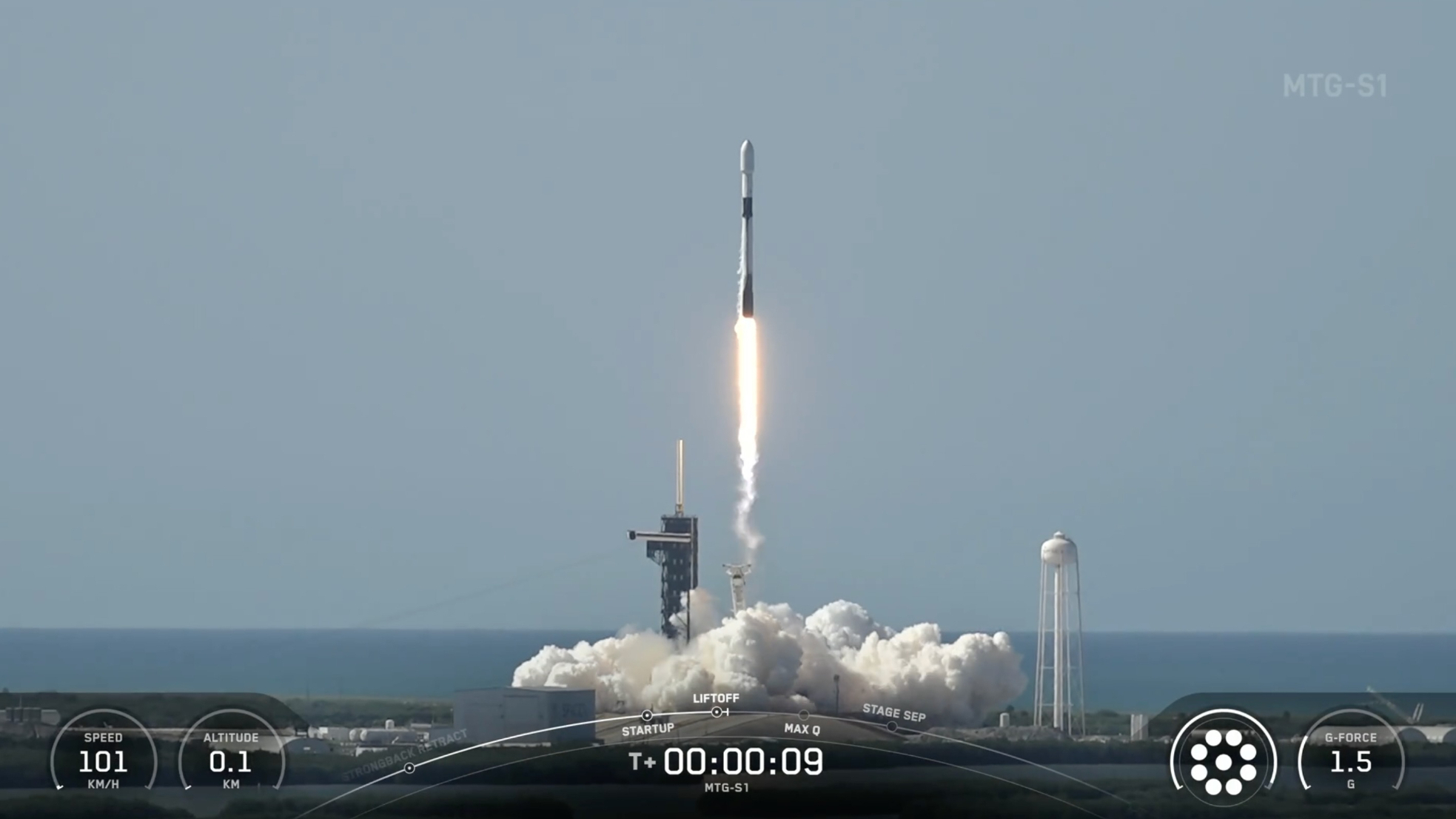
NASA's Jupiter-orbiting Juno probe has captured gorgeous imagery of a storm that recently cropped up on the giant planet and was spotted by an amateur astronomer.
Juno snapped a series of photos of the feature, dubbed "Clyde's Spot" — named after its discoverer Clyde Foster of South Africa — on the morning of June 2, 2020. At the time, the probe was flying between 28,000 miles and 59,000 miles (45,000 to 95,000 kilometers) above Jupiter's cloud tops, at latitudes ranging from 48 degrees south to 67 degrees south, NASA officials said.
Clyde's Spot swirls not too far from Jupiter's huge Great Red Spot. But unlike that famous latter storm, which has been raging for centuries, Clyde's Spot popped up not long ago.
Related: In photos: Juno's amazing views of Jupiter
The new storm was first spotted on May 31 by amateur astronomer Clyde Foster of Centurion, South Africa (hence the name). The timing worked out well for Juno, which was scheduled to make its 27th close flyby of Jupiter just a few days later. (Juno loops around Jupiter on a highly elliptical orbit, gathering most of its science data during close passes that occur every 53.5 Earth days.)
The June 2 flyby also happened to take Juno relatively close to Clyde's Spot — close enough to image it with its onboard JunoCam instrument, anyway.

"The feature is a plume of cloud material erupting above the upper cloud layers of the Jovian atmosphere," NASA officials wrote in a description of the new imagery. "These powerful convective 'outbreaks' occasionally erupt in this latitude band, known as the South Temperate Belt (JunoCam observed another outbreak at this latitude back on Feb. 7, 2018)."
Breaking space news, the latest updates on rocket launches, skywatching events and more!

NASA makes JunoCam data available to the public, for both perusal and processing. Citizen scientist Kevin Gill processed five JunoCam images of Clyde's Spot into the striking view you see above. (Gill is a prolific and talented image processor with many such beauty shots under his belt.)
The $1.1 billion Juno mission launched in August 2011 and arrived at Jupiter on July 4, 2016. The probe's observations are helping scientists better understand the gas giant's composition, structure, formation and evolution, mission team members have said. Juno will continue studying Jupiter through at least July 2021, provided the probe remains healthy.
Mike Wall is the author of "Out There" (Grand Central Publishing, 2018; illustrated by Karl Tate), a book about the search for alien life. Follow him on Twitter @michaeldwall. Follow us on Twitter @Spacedotcom or Facebook.
Join our Space Forums to keep talking space on the latest missions, night sky and more! And if you have a news tip, correction or comment, let us know at: community@space.com.

Michael Wall is a Senior Space Writer with Space.com and joined the team in 2010. He primarily covers exoplanets, spaceflight and military space, but has been known to dabble in the space art beat. His book about the search for alien life, "Out There," was published on Nov. 13, 2018. Before becoming a science writer, Michael worked as a herpetologist and wildlife biologist. He has a Ph.D. in evolutionary biology from the University of Sydney, Australia, a bachelor's degree from the University of Arizona, and a graduate certificate in science writing from the University of California, Santa Cruz. To find out what his latest project is, you can follow Michael on Twitter.
